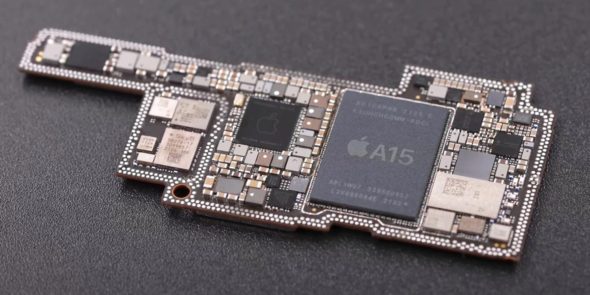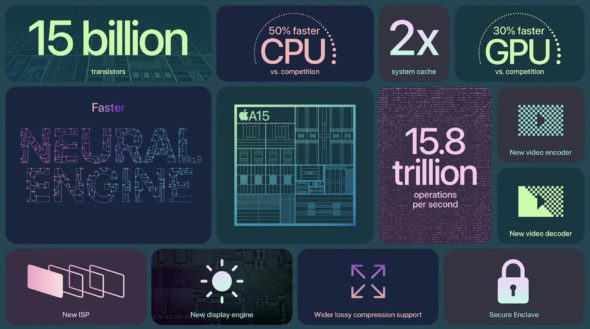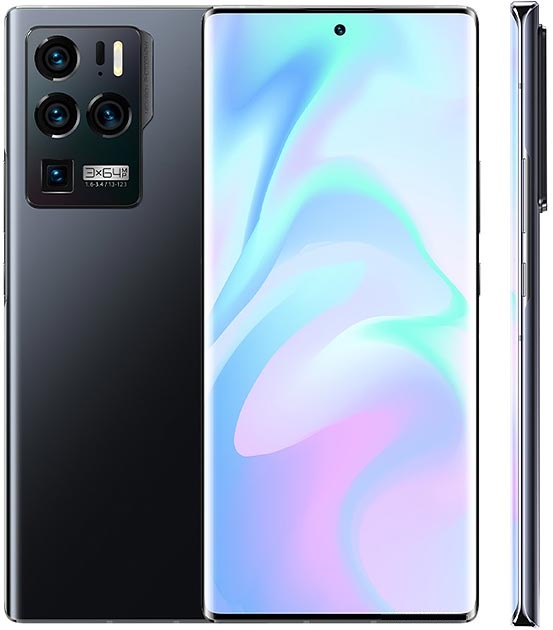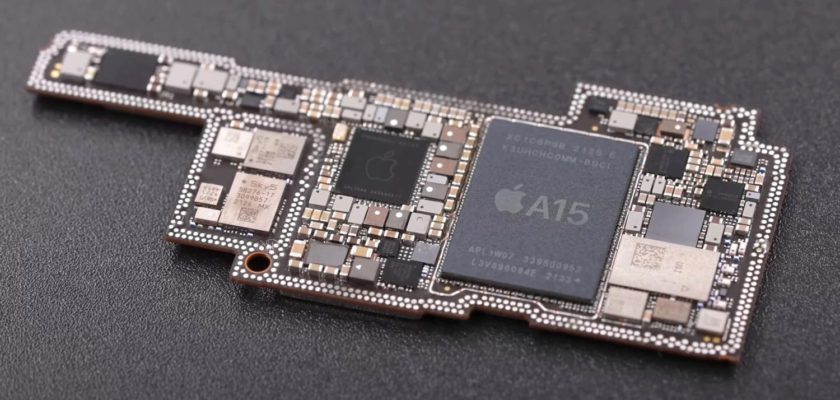It's great when a company comes out with a product that meets their expectations and exceeds those of analysts and customers. Where everyone expected that there was a little improvement in the performance of the iPhone 13 compared to the iPhone 12, as it came with the same 5 nanometer manufacturing technology, but an improved Plus version combined performance strength and improved energy efficiency to increase battery life. Independent tests confirmed that the A15 Bionic processor for the iPhone 13 and the latest iPad mini, is more impressive and surpasses what Apple said about it, as it easily outperforms the latest competing phone processors.

A15 Bionic processor is faster than expected

Apple told us during the iPhone 13 launch event that the A15 Bionic processor is faster than competing processors with up to 50% faster performance, but it turns out in lab experiments that the A15 Bionic chip is actually up to 62% faster than its nearest competitor.
According to the tests conducted by AnandTech, the performance of the four CPU cores of the A15 is very impressive not only due to its powerful performance, but also its incredibly power saving under extreme operating conditions to the highest possible level.
The report explains: “Performance increases usually always come with some kind of energy efficiency deficit, or at least constant efficiency, but instead Apple has been able to reduce power while increasing performance, which means a 17% energy efficiency improvement compared to the A14 chip. .
Perhaps most surprisingly, in some cases, the A15 chip performs better than the Apple M1 chip found inside the latest Mac models. And AnandTech says it's actually on par with AMD's latest Ryzen 5950X chip for desktop PCs.
The performance of the graphics processor in the iPhone 13 is also great

It's not just about processing power, as the A15 processor offers exceptional results in graphics processor tests conducted on the iPhone 13 Pro, as the new Apple chip proved to be up to 30% faster than last year's A14 Bionic chip.
The iPhone 13, which carries a slightly less powerful GPU than the iPhone 13 Pro (with four cores instead of five), increased graphics performance by about 14%. The report notes that the peak performance here is basically twice that of the nearest competitor, so this performance is an additional selling point for Apple.
No Android smartphone even comes close to the iPhone 13 in graphics performance. The best Android phone available right now is the ZTE Axon 30 Ultra, which is half the iPhone 13's performance in some graphics tests. Surprisingly, iPhone 11 is still faster than any Android phone in many cases.

The report concludes that overall, although the A15 Bionic chip hasn't come with the overwhelming power we've been accustomed to from Apple in recent years, it does come with a solid performance that lasts several years into the future, rivaling flagship Android phones.
There is no doubt that this is bad news for major companies such as Qualcomm and Samsung and any other company looking to compete with Apple in the performance of the mobile phone chip, the difference is widening frighteningly.
Source:


The price should be affordable, but no way
Yes, every year the difference between Apple's processors and Qualcomm's processors expands.
Unfortunately, the majority do not take advantage of the processor's power in design and creation, but rather use it in games and taking pictures that end up in the Recently Deleted folder? Even the simple user who buys the phone in order to keep pace with development instead of keeping the phone for five or six years; You find it rushing to sell it as soon as the new generation is released. What the company should really study is the issue of prices so that there is a proportion and proportionality in this aspect.
There is no competitor to Apple's processors
..Apple is competing with itself in this matter..Imagine the iPhone XNUMXs so far, working and running in a buggy and strong 💪🏼
Imagine how the Note XNUMX now works with PUBG Mobile 😂
Strong point for those who buy an iPhone for games that will benefit my son 👍🏻
Indeed, this is a point of superiority for Apple
And I hope, in the next iPhone, that Apple enhances this point of superiority with a larger battery, better fast charging, and eliminating the notch
Thanks for the great article 🌹
The most important thing now is a simultaneous update.. We hope to update the application, as it is the most important application we have after iPhone Islam.. Talk to the application, Sheikh Tariq, may God bless you and bless you and benefit you.
If we want to measure Apple processors at the real level, it must be installed on all systems and devices from different companies.
It's old, my friend
Thanks, this is what makes us happy
The most expressive word that comes to mind is “fabulous”. In light of this fierce competition in technology, you find a company that excels and crushes its competitors (in terms of processors) and becomes uncompetitive!!
Really mythical.
This article reminded me of an old article titled “The Secret Behind Apple’s So Much Superiority”
Apple processors are really great
Not to mention also the compatibility between hardware and software, which makes the performance of the iPhone fabulous